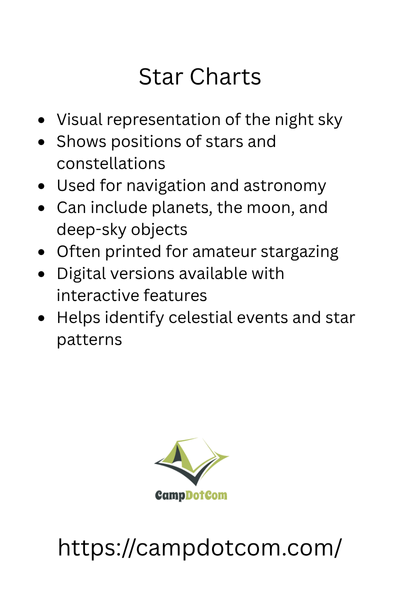When I first got into star charts, I will be honest, I was totally overwhelmed. So many squiggly lines, strange symbols, and names I could not pronounce. I thought, “How am I supposed to make sense of this?” But trust me, once you get the hang of it, star charts become one of the most exciting tools in your stargazing kit.
They are like treasure maps for the sky. Instead of gold, you are finding Saturn, constellations, meteor showers, and maybe even your own sense of wonder again. Sounds dramatic? Maybe a little. But if you have ever seen a crisp night sky and felt something stir in your chest, you get it.
Read More About Star Chart

What the Heck Is a Star Chart, Anyway?
So let us break it down. A star chart, also called a sky map or celestial map, shows you where stars, planets, and constellations are at a specific time and location. The sky changes constantly, hour by hour, season by season, so these charts help you track what is above your head and when.
As an Amazon Associate, I earn from qualifying purchases. Some of the links in this article are affiliate links. This means that, at zero cost to you, I will earn an affiliate commission if you click through the link and finalize a purchase.
Think of it like GPS for the cosmos. Except instead of telling you how to get to Costco, it shows you where Orion is chilling tonight.
Some charts are printed, some are apps, and some are these clever rotating wheels called planispheres (yeah, it’s a weird word). They all serve the same purpose: helping you not stare blankly at the sky wondering if that bright thing is a planet or just a plane.
More Things to Know About Star Chart

Why I Got Hooked on Star Charts
Quick story: a few years ago, my buddy Mike got a telescope for his birthday. We drove out to this quiet spot in the country, set it up, and realized… we had no idea where to point it. Just two grown adults squinting at the sky going, “Is that a thing?”
That night I downloaded a simple star chart app on my phone and boom, we found Jupiter. I saw its moons. Actual moons. It was like unlocking a secret level in real life.
After that I was completely hooked. I got a planisphere, learned the constellations, and started using star charts almost every week. It has become my favorite way to unwind. No Wi-Fi, no stress, just me, the stars, and maybe a snack or two.
Getting Started: Star Charts for Beginners
If you’re just dipping your toes in, don’t worry. You don’t need to be an astronomer or own a telescope the size of a canoe.
Start with an app. Seriously. There are tons of free options like Sky Map (Android) or SkyView (iPhone). You just hold your phone up, and it shows you what you’re looking at. Instant star chart.
Want to go old school? Grab a planisphere. They’re cheap, easy to use, and they don’t need charging. You set your date and time, and it shows you what stars will be visible in your area.
One tip: your eyes need about 20 minutes to adjust to darkness. So don’t freak out if you don’t see much at first. Give it time. And maybe bring a red flashlight—it won’t mess with your night vision like a regular one.
What Can You Actually See?
This is the fun part. Using star charts, you’ll learn to recognize constellations like the Big Dipper, Cassiopeia, or my favorite, Scorpius. You’ll spot planets (Venus is super bright!), track the moon’s phases, and maybe even catch a meteor shower.
Honestly, once you start identifying stuff in the sky, you’ll feel like a celestial Sherlock Holmes. And it’s wildly satisfying to say, “Hey, that’s Mars,” and be right.
Also? It’s a great conversation starter. Whether you’re impressing a date or teaching your kids, knowing your way around a star chart makes you look kind of cool.
Make It a Ritual
One of the best things about star charts is they turn stargazing into a ritual. For me, it’s become this grounding practice. After a hectic week, I check the chart, grab a blanket, and head outside. No scrolling, no noise. Just the sky doing its thing.
And every time, I see something I didn’t expect—whether it’s a satellite zipping by or the quiet awe of watching the moonrise. The chart points the way, but the experience? That’s all yours.
Let Your Journey Begin with a Star Chart as Your Guide
Let’s be real—you don’t need a star chart to look up at the sky. But having one? It changes the game. It gives you context, direction, and a deeper connection to the universe above you. You stop seeing just “stars” and start recognizing patterns, paths, and even stories.
So whether you’re a science geek, a casual sky-watcher, or someone just looking for a peaceful new hobby, give star charts a shot. They might just surprise you.
And who knows? One night, you might be the one pointing out Saturn’s rings while your friends stare in awe.
Wanna guess who they’ll come to next time they see something bright in the sky?
Yeah. That’ll be you.
